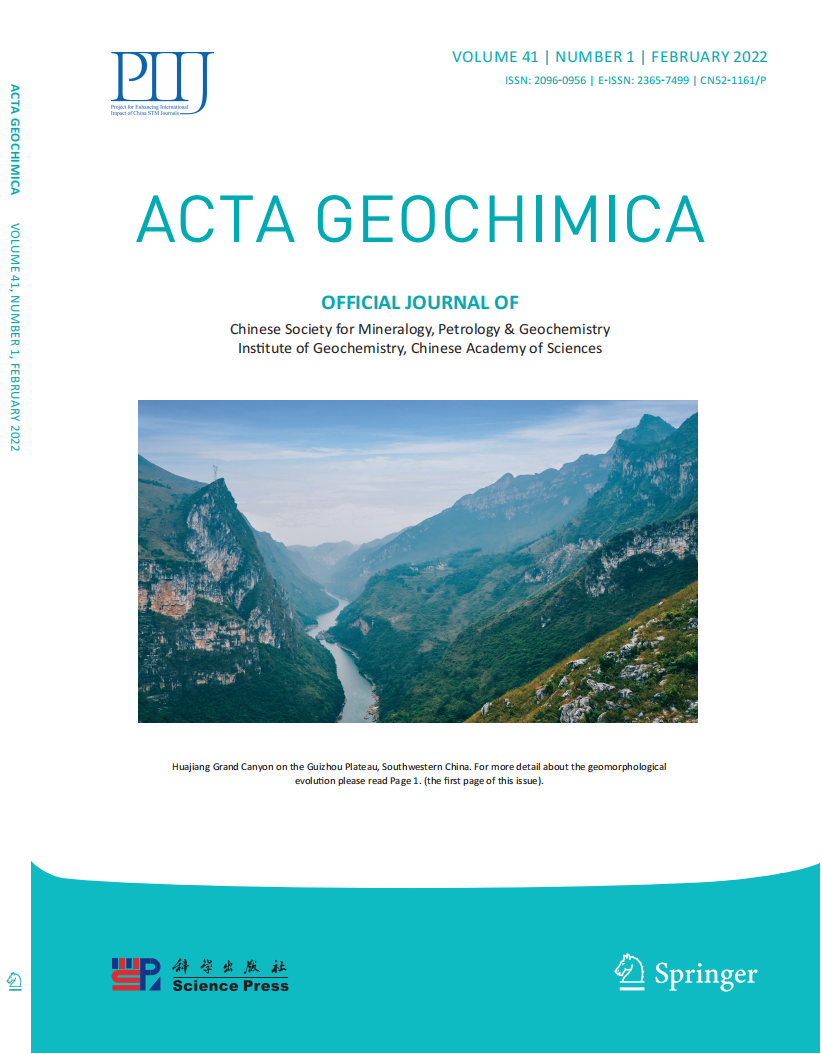- 钛学术文献服务平台 \
- 学术期刊 \
- 基础科学期刊 \
- 化学期刊 \
- 地球化学学报(英文)期刊 \
Petrogenesis of the Neoarchean zincian chromite within ultramafic xenoliths, Bastar Craton, India
Petrogenesis of the Neoarchean zincian chromite within ultramafic xenoliths, Bastar Craton, India
原文服务方:
地球化学学报(英文)
摘要:
The present study reports and discusses the genesis of zincian chromite in the ultramafic xenoliths from the Dongripali area, Bastar craton, Central India. The zincian chromite is in the ultramafic xenoliths of Bengpal supracrustal rock hosted by Neoarchaean Bundeli gneisses.Compositionally zincian chromite shows a range of Cr2O3(39.69 to 51.66 wt%), Al2O3(05.30 wt% to 08.71 wt%),FeO(21.74 wt% to 27.51 wt%), Fe2O3(10.19 wt% to 19.36wt%) with higher ZnO content ranging from 1.73 wt% to 4.08 wt%. Accordingly, their Cr# [Cr/(Cr + Al)] varies in a narrow range from 0.83 to 0.85. Its calculated melt composition supports metamorphic or post-magmatic nature rather than common occurrences such as inclusion in diamonds, meteorites, and association with any sulfide-rich mineralised belt. This reveals that the post-magmatic processes play a vital role in transforming chromite to zincian chromite. The empirical thermometric calculation from chromite, amphibole, and pyroxene support their metamorphic origin and formed during low-P and high-T amphibolite grade facies of metamorphism(~ 700 °C).The Neoarchaean granitic magmatism has a significant role in generating and transferring the heat during contact metamorphism with hydration of ultramafic xenoliths and further alteration, i.e., serpentinisation. The olivine is a major repository for Mn, Zn, and Co in peridotite/ultramafic; these elements get mobilised during the metamorphism and serpentinisation. This is a possible reason for the mobilisation of zinc and incorporation in the chromite within altered ultramafic. As a result, chromiterich ultramafic xenolith subjected to metamorphic process gets enrichment of Zn and Fe due to elemental exchange. It converts common chromite into zincian chromite, as reported in altered ultramafics elsewhere.

推荐文章
Geochemical constraints on the tectonic setting of the Sonakhan Greenstone Belt, Bastar Craton, Cent
Supra-subduction
Neo-Archean
Sonakhan Greenstone terrain
Bastar craton
内容分析
关键词云
关键词热度
相关文献总数
(/次)
(/年)
文献信息
| 篇名 | Petrogenesis of the Neoarchean zincian chromite within ultramafic xenoliths, Bastar Craton, India | ||
| 来源期刊 | 地球化学学报(英文) | 学科 | 地球科学 |
| 关键词 | |||
| 年,卷(期) | 2025,(3) | 所属期刊栏目 | |
| 研究方向 | 页码范围 | 85-101 | |
| 页数 | 17页 | 分类号 | |
| 字数 | 语种 | 中文 | |
| DOI | |||
五维指标
版权信息
全文
- 全文.pdf
引文网络
引文网络
二级参考文献 (0)
共引文献 (0)
参考文献 (0)
节点文献
引证文献 (0)
同被引文献 (0)
二级引证文献 (0)
2025(0)
- 参考文献(0)
- 二级参考文献(0)
- 引证文献(0)
- 二级引证文献(0)
引文网络交叉学科
相关学者/机构
期刊影响力
地球化学学报(英文)
主办单位:
中国科学院地球化学研究所
出版周期:
双月刊
ISSN:
2096-0956
CN:
52-1161/P
开本:
大16开
出版地:
贵州省贵阳市观水路46号地球化学研究所
邮发代号:
创刊时间:
1982-01-03
语种:
英文
出版文献量(篇)
294
总下载数(次)
0
期刊文献
相关文献
推荐文献
- 期刊分类
- 期刊(年)
- 期刊(期)
- 期刊推荐

 免费查重
免费查重










